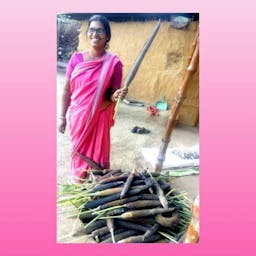Supreme Court of India Bats for Women's Work
Jan 21, 2015
Story
The Supreme Court of India has passed on 22.7.10 what can only be termed as a fascinating landmark judgment in favour of women. I am attaching this judgment for the benefit of members. The case relates to the amount of payment in compensation to be made to the legal relatives of a housewife killed in a motor vehicle accident. However, in passing the judgment one of the Honourable Judges A.K. Ganguly has made some strong obiter dicta on the adverse gender bias against women in the Census of India definition of work that are absolutely top class as follows -
Despite the clear constitutional mandate to
eschew discrimination on grounds of sex in
Article 15(1) of the Constitution, in its
implementation there is a distinct gender bias
against women and various social welfare
legislations and also in judicial pronouncements.
Clause 6 of the said Schedule ( under section 163 A of the Motor vehicles Act, 1988 ) provides
for notional income of those who had no income
prior to accident. Clause 6 has been divided
into two classes of persons, (a) non-earning
persons, and (b) spouse. Insofar as the spouse
is concerned, the income of the injured in fatal
and non-fatal accident has been categorized as
1/3rd of the income of the earning and surviving
spouse. It is, therefore, assumed if the spouse
who does not earn, which is normally the woman in
the house and the homemaker, such a person cannot
have an income more than 1/3rd of the income of
the person who is earning. This categorization
has been made without properly appreciating the
value of the services rendered by the homemaker.
To value the income of the home-maker as onethird
of the income of the earning spouse is not
based on any apparently rational basis.
4.This bias is shockingly prevalent in the work of
Census. In the Census of 2001 it appears that
those who are doing household duties like
cooking, cleaning of utensils, looking after
children, fetching water, collecting firewood
have been categorized as non-workers and equated
with beggars, prostitutes and prisoners who,
according to Census, are not engaged in
economically productive work. As a result of
such categorization about 36 crores (367 million)
women in India have been classified in the Census
of India, 2001 as non-workers and placed in the
category of beggars, prostitutes and prisoners.
This entire exercise of Census operation is done
under an Act of Parliament.
5.Under Section 4 of the Census Act, 1948, the
Central Government may appoint a Census
Commissioner to supervise the taking of census
throughout the area where census is intended to
be taken.
6.The Central Government has made Census Rules,
1990 under Section 18 of the Census Act, 1948.
Under Rule 5(c), (d) and (e) of the Rules, the
functions of the Commissioner are listed, which
include devising the census schedules or
questionnaires, compiling and providing guidance
in taking and computing results and publishing
the statistics.
7. The Census Commissioner released data on
classification of population by workers and nonworkers
based on provisional results of the
Census of India 2001 on 30th January, 2002. Thus,
the categorization, compilation and computation
of the data was done under the supervision and
guidance of the Census Commissioner. This is
totally a statutory exercise by public
authorities. Therefore, this approach of equating
women, who are homemakers, with beggars,
prostitutes and prisoners as economically nonproductive
workers by statutory authorities
betrays a totally insensitive and callous
approach towards the dignity of labour so far as
women are concerned and is also clearly
indicative of a strong gender bias against women.
8.It is thus clear that in independent India also
the process of categorizing is dominated by
concepts which were prevalent in colonial India
and no attempt has been made to restructure those
categories with a gender sensitivity which is the
hallmark in our Constitution.
9.Work is very vital to the system of gender
reconstruction in societies and in this context
masculine and feminine work is clearly
demarcated. The question which obviously arises
is whether Census definition of work reflects the
underlying process of gender discrimination.
10.Women are generally engaged in home making,
bringing up children and also in production of
goods and services which are not sold in the
market but are consumed at the household level.
Thus, the work of women mostly goes unrecognized
and they are never valued.
11.Therefore, in the categorization by the Census
what is ignored is the well known fact that women
make significant contribution at various levels
including agricultural production by sowing,
harvesting, transplanting and also tending
cattles and by cooking and delivering the food to
those persons who are on the field during the
agriculture season.
12.Though, Census operation does not call for
consideration in this case but reference to the
same has been made to show the strong bias shown
against women and their work. We hope and trust
that in the on-going Census operation this will
be corrected.
There is of course also the point that why should prostitutes be considered as non workers when they are forced to sex work due to the patriarchal social structure of society. This has eluded the honourable judge but this is pardonable given that despite being a man he has penned such a fantastic judgment. Anyway, this can be taken up with the Census Commissioner by the National Commission for Women which can also push for legalisation of sex work in India. All in all I must say that I am thrilled that the Supreme Court has given such a judgment against adverse gender bias with regard to the valuation of women's work which has always been a sore point for me.




